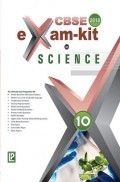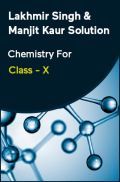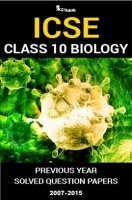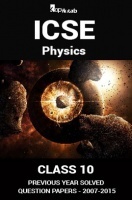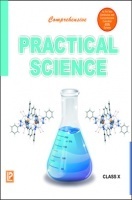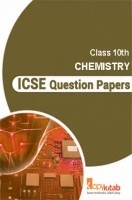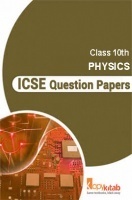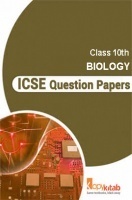★ It Is Strictly In Accordance With The Latest Curriculum For The Xth Class Prescribed By CBSE, New Delhi.
★ Subject Matter Is Presented In A Simple And Lucid Manner.
★ Properly Labeled Diagrams Are Provided In The Experiment.
★ Sufficient Theory Is Provided At The Beginning Of Each Experiment.
★ Tables Are Given For Direct Recording Of The Observations.
★ Precautions Are Given For Each And Every Experiment.
★ The Procedure Required For Each Experiment Is Written In An Orderly Manner.
★ Practical Questions And Multiple Choice Questions With Answers Are Given In Volume II.
We Sincerely Hope That The Present Book Will Prove To Be More Useful For The Students In Their Practical Class.
This book Useful for Class-10th Science Students.
Experiment 1A. Finding The Ph Of The Following Samples By Using Ph Paper/Universal Indicator:
(A) Dilute Hydrochloric Acid (Hcl)
(B) Dilute Sodium Hydroxide (NaOH) Solution
(C) Dilute Ethanoic Acid (Ch3Cooh) Solution
(D) Lemon Juice
(E) Water
(F) Dilute Hydrogen Carbonate Solution.
Experiment 1B. Studying The Properties Of Acids (Hcl) By Their Reaction With:
(A) Litmus Solution (Blue/Red)
(B) Zinc Metal
(C) Solid Sodium Carbonate
Experiment 1C. Studying The Properties Of Bases (Naoh) By Their Reaction With:
(A) Litmus Solution (Blue/Red)
(B) Zinc Metal
(C) Solid Sodium Carbonate
Experiment 2. Performing And Observing The Following Reactions And Classifying Them Into:
(A) Combination Reaction
(B) Decomposition Reaction
(C) Displacement Reaction
(D) Double Displacement Reaction.
(I) Action Of Water On Quicklime.
(II) Action Of Heat On Ferrous Sulphate Crystals.
(III) Iron Nails Kept In Copper Sulphate Solution.
(IV) Reaction Between Sodium Sulphate And Barium Chloride Solutions.
Experiment 2A. To Perform And Observe The Action Of Water On Quicklime And Classify The Reaction.
Experiment 2B. To Perform And Observe The Action Of Heat On Ferrous Sulphate Crystals And
Classify The Reaction.
Experiment 2C. To Perform And Observe The Reaction Of Iron Nails Kept In Copper Sulphate Solution And Classify The Reaction.
Experiment 2D. To Perform And Observe The Reaction Between Sodium Sulphate And Barium Chloride Solutions And Classify The Reaction.
Experiment 3. (I) Observing The Action Of Zn, Fe, Cu, And Al Metals On The Following Salt Solutions:
(A) Znso4(Aq) (B) Feso4(Aq) (C) Cuso4(Aq) (D) Al2(So4)
3(Aq).
(II) Arrange Zn, Fe, Cu, And Al (Metals) In The Decreasing Order Of reactivity-based Based
On The Above Result.
Experiment 4. Studying The Dependence Of Potential Difference (V) Across A Resistor On The Current
(I) Passing Through It And Determine Its Resistance. Also Plotting A Graph Between
V And I.
Experiment 5A. Determination Of The Equivalent Resistance Of Two Resistors When Connected In Series.
Experiment 5B. Determination Of The Equivalent Resistance Of Two Resistors When Connected In Parallel
Experiment 6. Preparing A Temporary Mount Of A Leaf Peel To Show Stomata.
Experiment 7. Experimentally Show That Carbon Dioxide Is Given Out During Respiration.
Experiment 8. Study Of The Following Properties Of Acetic Acid (Ethanoic Acid):
(I) Odour
(II) Solubility In Water
(III) Effect On Litmus
(IV) Reaction With Sodium Hydrogen Carbonate
Experiment 9. Study Of The Comparative Cleaning Capacity Of A Sample Of Soap In Soft And Hard
Water.
Experiment 10A. Determination Of The Focal Length Of A Concave Mirror By Obtaining The Image Of A Distant Object.
Experiment 10B. Determination Of The Focal Length Of Convex Lens By Obtaining The Image Of A Distant Object.
Experiment 11. Tracing The Path Of A Ray Of Light Passing Through A Rectangular Glass Slab For Different Angles Of Incidence. Measure The Angle Of Incidence, Angle Of Refraction, Angle Of Emergence And Interpret The Result.
Experiment 12. Studying (A) Binary Fission In Amoeba And (B) Budding In Yeast With The Help Of Prepared Slides.
Experiment 13. Tracing The Path Of The Rays Of Light Through A Glass Prism.
Experiment 14. Finding The Image Distance For Varying Object Distances In The Case Of A Convex Lens And Drawing Corresponding Ray Diagrams To Show The Nature Of the Image Formed.
Experiment 15. Identification Of The Different Parts Of An Embryo Of A Dicot Seed (Pea, Gram, Or Red Kidney Bean).







